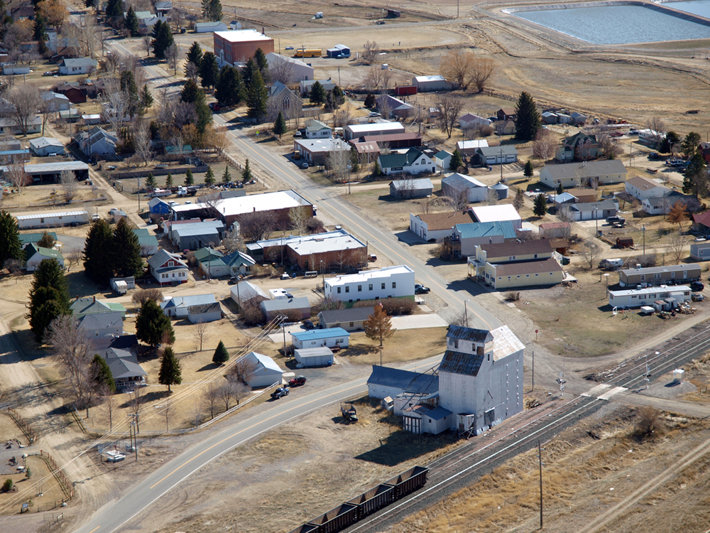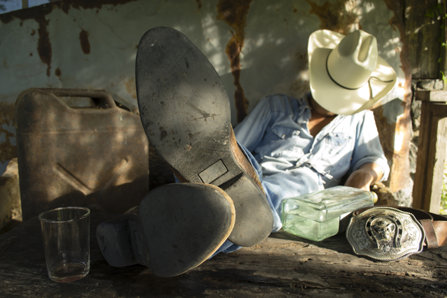Alcohol Misuse in Rural Communities—Why Drinking Ends Up Being a “Way of Life” in the Country

According to the Treatment Episode Data Set Report (a research project done by the Substance Abuse and Mental Health Services Administration), about 50 percent of treatment center admissions in rural America are for alcohol. That means that, of all the different drugs and addictive substances available in the U.S., half of all addicts in rural America are getting hooked on alcohol. Compare that to only 4 percent of treatment admissions in rural America being for non-heroin opioids, 3 percent for heroin, and 5 percent for cocaine. Alcohol is clearly the most misused drug in rural America.
Why?
What factors contribute to more per capita alcohol abuse in rural areas as opposed to urban areas? Why is it that rural communities seem to attract alcohol misuse, whereas urban communities are more prone to drug use? What types of socioeconomic factors cause people in rural America to turn to alcohol misuse in the first place?
Factors Which Contribute to Alcohol Abuse in Rural America
In rural areas, 37 percent of young people use alcohol, as compared to only 34 percent of young people who do so in big cities, according to the Rural Health Information Hub. Furthermore, 5 percent of young people binge drink in rural areas, as compared to only 4 percent who do so in the major metropolitan areas.
Not having access to drugs is probably a factor. In the big cities, it’s easy enough to find a drug dealer on the street corner or somewhere nearby. In a very rural setting with very few people around, this is hardly an option.
Here are some of the other reasons for substantial alcohol misuse in rural America, as cited and discussed by the Rural Health Information Hub, and as backed up by research from other organizations:
- Statistically lower levels of educational attainment. Rural America does not typically attract highly learned professionals, nor do the county school systems have the necessary funding (according to the National Education Association) to pay those professionals. That leads to underfunded and understaffed school systems. When a school cannot fund its curriculum correctly, not only do kids leave without ever having learned anything about the importance of avoiding substances, but kids leave with little confidence or excitement for creating a rewarding career and life for themselves.
- Higher levels of poverty. According to the United States Department of Agriculture, rural areas also have higher levels of poverty than urban areas. The poverty gap is not huge, about a 3 percent difference on average, but a life of poverty, especially when it feels like one cannot break free from it, is sometimes all it takes to push one to drink.

- Unemployment and financial struggles. The RHIH also briefly touches on unemployment in rural America as a reason why rural residents turn to drink, primarily to cope with the battle of not being able to find work. U.S. News published an article on “The Divide Between Rural and Urban America.” According to their research, rural communities still have not recovered the jobs they lost in the recession. The rural job market is about 4 percent smaller than it was in 2008. Weak or negative job growth often drives people to drink.
- Lack of access to quality medical care. Rural communities are often thought to be “underserved,” meaning that they do not get the attention of the medical community that they should. A doctor cannot create as successful or profitable a practice if he sets up shop in a rural town. As a result, most doctors head to the cities to practice medicine. The RHIB cites this point as one of the primary reasons why people are more likely to drink heavily in rural settings. They don’t have enough medical experts, doctors, nurses, dietitians, chiropractors, physical therapists, holistic physicians, and so on telling them to avoid heavy alcohol consumption. According to the National Rural Health Association, rural areas only have about 40 physicians for every 100,000 people, versus urban areas which have 53 physicians for every 100,000 people.
- Isolation from regular human interaction. Another factor is simply the isolation and lifestyle that comes with living “out in the country.” Humans are social creatures by nature, and when a rural lifestyle is lived by necessity and not by choice, it can have harmful effects on people, causing them to turn to the bottle as a coping mechanism. Some choose the rural lifestyle and find great joy in it. Some are born into it or have to live that life by force of necessity. They may struggle with it, and they may drink heavily to “escape” from it.
Addressing Alcohol Misuse in Rural America
The best way to help people who struggle with alcohol addiction is to help them get into and through a treatment program at an inpatient, residential addiction treatment center. Not all programs are structured in the same way, but the truly helpful and benevolent treatment programs offer effective services to assist alcoholics in coming down off of alcohol, (none too easy a feat, by the way, and one which can be dangerous if an addict does not seek professional help). Such rehab programs also offer behavioral support, life-changing tools, one-on-one care, and powerful healing processes. Excellent treatment centers offer life skills courses and a long-term treatment model.
One of the problems mentioned earlier is that rural Americans often do not have access to addiction treatment in their area. But where did this concept come from that one must seek addiction treatment within their own area? An argument could be made that traveling outside of one’s space has significant benefits conducive to one’s recovery.
Addiction does not have to be a “way of life” for those who live in sparsely populated areas. Country living can and should offer the same qualities of life, health, happiness, and sobriety as the most well-maintained urban areas do. If you know someone who is struggling with alcoholism but who can’t seem to find treatment or kick their habit, do your best to help them get into a residential treatment center.
Sources:
- https://www.samhsa.gov/sites/default/files/teds-short-report043-urban-rural-admissions-2012.pdf
- https://www.ruralhealthinfo.org/topics/substance-abuse
- http://www.nea.org/home/16358.htm
- https://www.ers.usda.gov/topics/rural-economy-population/rural-poverty-well-being/
- https://www.ruralhealthweb.org/about-nrha/about-rural-health-care


 ®
®